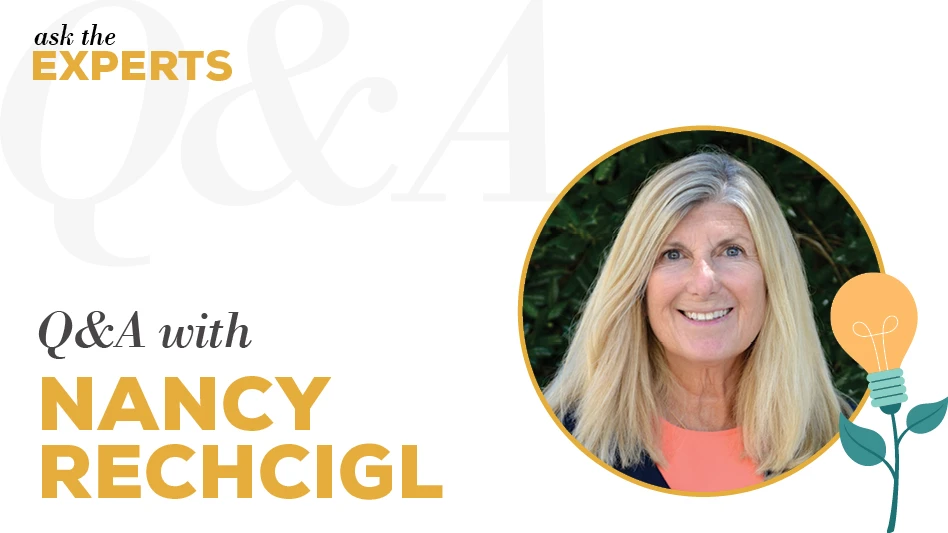
Photo by Katelyn Mullen/Adobe Firefly
AmericanHort economist Charlie Hall offered his always-anticipated broad view of the economic health of the horticultural industry to Cultivate 2024 attendees in July. But as he began his talk, he wanted to make one thing clear: While the data shows an overall softening of the market since 2023, it was “too early to freak out.”
Hall noted that aggregate short-term data might show a slight dip in the industry’s strength, but stressed the details were far more complicated. For instance, a look at year-over-year top-line gross sales compared to 2023 revealed a bell-shaped curve that split the reporting cohort of business owners into thirds. One third were performing below 2023, one third were seeing no-to-little positive change in sales, and one third were performing much better than the previous year in top-line gross sales. Based solely on that graph, Hall noted an individual business owner’s assessment of the economic landscape would be largely dependent on where they sat on the curve: Things looked bleak on one side of the hill, sunny on the other and basically the same at the top.
A closer look at the short term
This curve was also seen in a variety of other metrics. A comparison of units sold split business owners in half with 46% selling less than 2023 and 54% selling more than 2023. When asked how net profit was trending in 2024 compared to 2023, half reported underperforming the previous year and half reported outperforming the previous year.
“These are all growers within the same industry,” Hall stressed. “But you see a very mixed performance based off of which venue they were selling into, which region of the country they were located in, weather conditions in that part of the country, et cetera.”
Importantly, that mixed performance was relatively narrow, even when considering where growers were selling. Most of those that Hall surveyed this year were somewhere between 10% above and 10% below the previous year’s metrics. That held true regardless of whether a business was selling mainly to landscapers, IGCs, big-box stores or re-wholesalers. There was not one market that led to greater performance than any other. It was mixed across the board.
Hall stressed, however, that it was important for the industry to understand the long-term trends. When the data is placed in a context that includes business prior to 2019, the economic health of the industry looks far more vibrant. For instance, compared to the pre-pandemic period, 98% of businesses report an increase in top-line sales, with a full 65% reporting a 25% growth in those sales over 2019.
That trend is true for the other metrics as well. Looking at unit sales, 87% report growth compared to 2019. In terms of net profit, 81% report growth compared to the pre-pandemic period.
That long-term upward trajectory is important, Hall explained. “I hear too many folks making assumptions about the overall direction of movement in the marketplace, based on performance this year,” he told the Cultivate crowd. “That's dangerous. No one's spring dictates the future and how your business performs. All right?”
So, he stressed that business owners look at the data and compare themselves to cohorts within their region. Comparative underperformance—all other things being equal—should prompt questions, Hall said. And those questions should lead to serious “strategic mindset changes” around value proposition, working capital and SKU rationalization.
While the data shows an overall softening of the market since 2023, it was “too early to freak out.”
Meat on the big-box bone
After a look at greenhouse and nursery firm metrics, Hall dove into the world of big-box retail. He stressed two important points. The first point was that big-box earnings were still incredibly strong. Calling out Home Depot in particular, the home improvement giant earned $109 billion in annual revenue in 2019 and $152 billion in the first half of 2024. That’s $44 billion above pre-pandemic revenue. Looking at the total with earnings before interest, taxes, depreciation, amortization (EBITA) and the company was still outperforming 2019 by $7 billion.
The second point was that in terms of the share of those profits, growers were providing products that made up a healthy portion of the revenue pie. In fact, nearly 17% of Home Depot sales were tied to the horticulture industry.
“When you go and ask for a price increase that you’ve got to have again this year, they've got the money to pay it,” Hall said. “We're a significant force in the profitability picture of box stores, and we shouldn't let them forget that.”
Regional strength in IGCs
Much like the rest of the horticultural supply chain, IGCs were still outperforming pre-pandemic years. However, according to data from The Garden Center Group (year-to-date to July 2024), North American garden centers’ gross sales, customer count and average ticket in the spring season were all down or flat.
While there may a tendency to wring hands over the softer performance of independent garden retail, looking at the regional breakdown of the data reveals a diversity of consumer behaviors across the United States. There were regional bright spots in the garden center data. The Northwest region and British Columbia were bucking national trends with revenue, average sales and transaction count all in the positive. In Ohio and the Gulf Coast region, the average sales percentage was up.
Meanwhile, garden retailers in the Southeast, South Central, Mid-Atlantic and Northeast were all seeing significant declines. Spring revenues were down between 7% and 9% in the Mid-Atlantic, Northeast and Southeast regions. But the hardest hit region in 2024 has been the South-Central region with revenues down 14% and transaction count down 10%.
Of course, the burning question is why the decreases are so sharp in some regions while trending positive in others. Hall noted that some of differences in data could be linked to another highly regional phenomenon: weather.
“When there's better weather, there's more revenue. When there's worse weather, there's less revenue,” Hall said, noting that while bad weather could explain some of the regional decline, it could not be singled out as the sole factor. Still, he said, weather would remain an influential factor in success moving forward.
“We're a significant force in the profitability picture of box stores, and we shouldn't let them forget that.”
The cost of doing business
As it does every year, inputs that contribute to the cost of doing business had increased in 2024. Despite inflationary pressures, Hall forecasted the increase to be a relatively modest 1% by the end of the year. The increase was largely driven by increased costs in labor and energy. Hall projected that those costs would continue to increase and noted that a cyclical increase in shipping costs would cause a 5% bump in inputs in 2025.
A historical look at the data shows about a 21% increase in input costs since 2018. Hall noted that some businesses may have been reluctant to absorb that increase by raising their prices by a similar amount. But he warned that failure to increase prices meant that business might be inadvertently covering the costs and sharing margins with customers, reducing the profits that could be realized.
Hall noted that some of that reluctance could be linked to an industry concerned with the influence of inflation on consumer spending. But the good news is that consumers have continued to spend more money on flowers, seed and potted plants year-over-year. And despite a dip in 2023 they’ve also continued to spend on outdoor equipment and supplies, matching early pandemic spending habits in the category. And while consumers may eventually change spending habits, it hasn’t happened yet.
“We have not seen that retreat yet. It's too early to start using price as a mechanism to stimulate whatever decline in sales, for whatever reason that you perceive,” Hall said. “It's too early to start lowering price, to try to correct it. It's too short of a timeframe. You can't make decisions like that. You know that input costs are increasing, so if you're thinking about lowering price, un-think it.”
There was additional data to back up a less conservative pricing strategy. Of note were comparisons of real personal expenditures in relation to consumer confidence. Hall pointed out that personal opinions about the economy become positive when those polled share the political party of the president and become less positive when they are a member of the opposite party. Also, while the consumer confidence index has remained relatively flat since the pandemic, spending (as measured by real personal consumption expenditures) has been increasing year over year. Despite people not feeling great about the state of the economy, they continue to open their wallet.
In the end, Hall noted that there were a couple of ways businesses could capture customer dollars while tightening up their business. “Don't be making strategic decisions of the long-run nature of your business based off of one year's comps,” he said. “Track customer analytics for your trade area over time. Manage your working capital, make sure you're doing your SKU rationalization and then focus on your value proposition. And for goodness’ sake, hold the line.”





